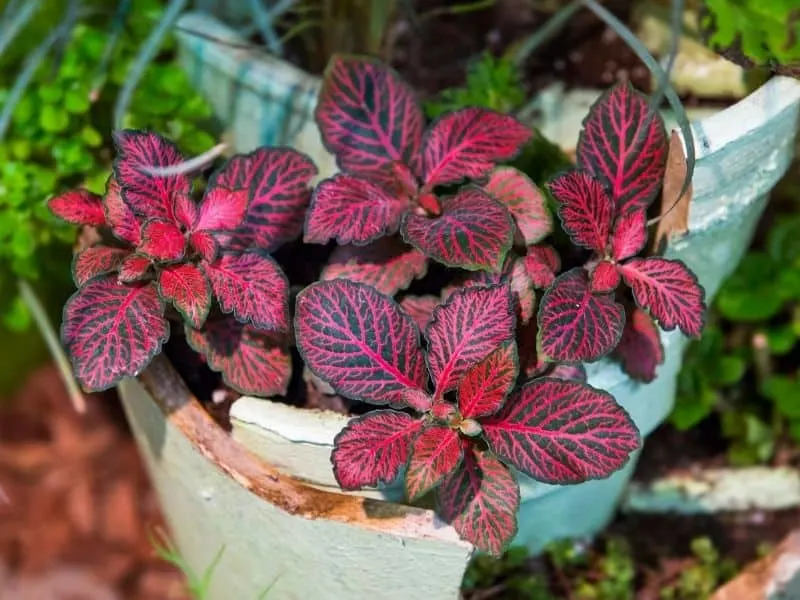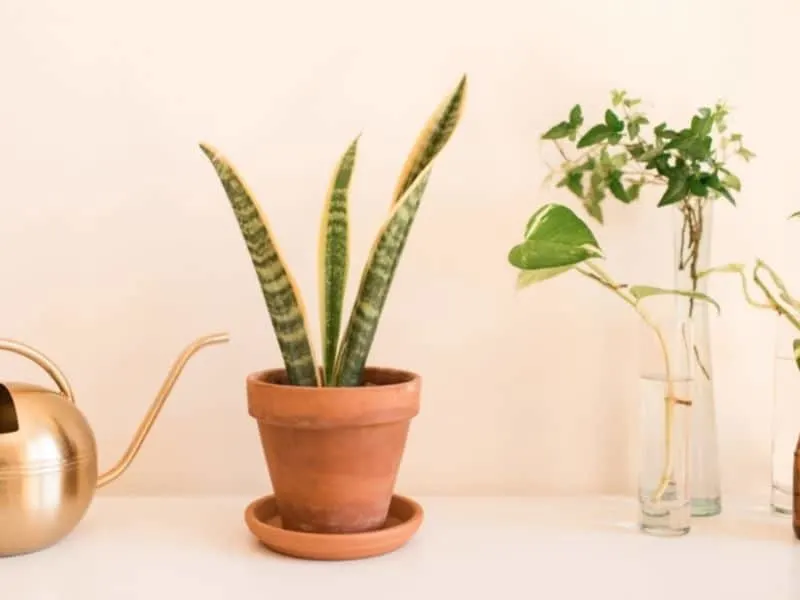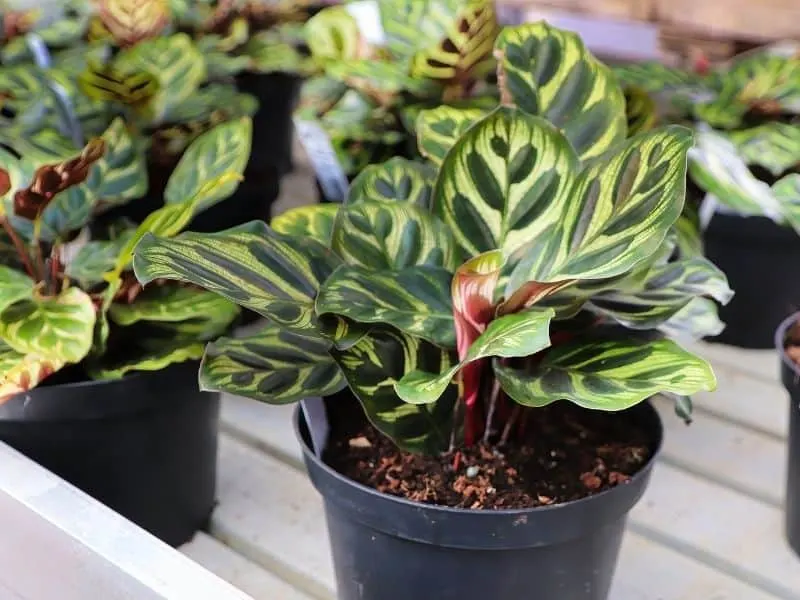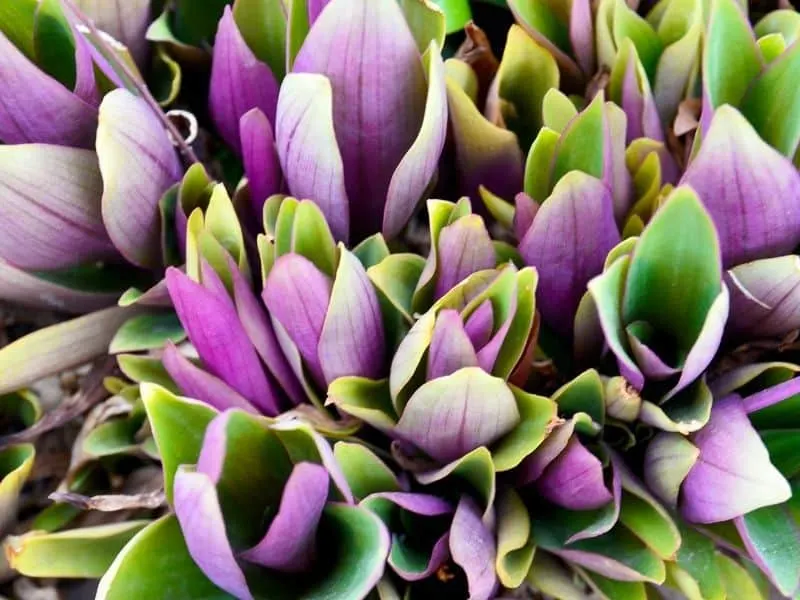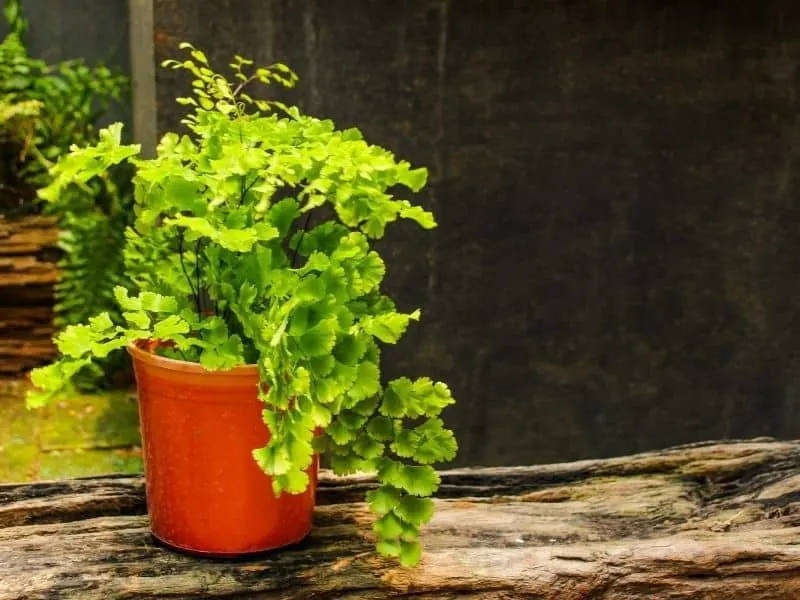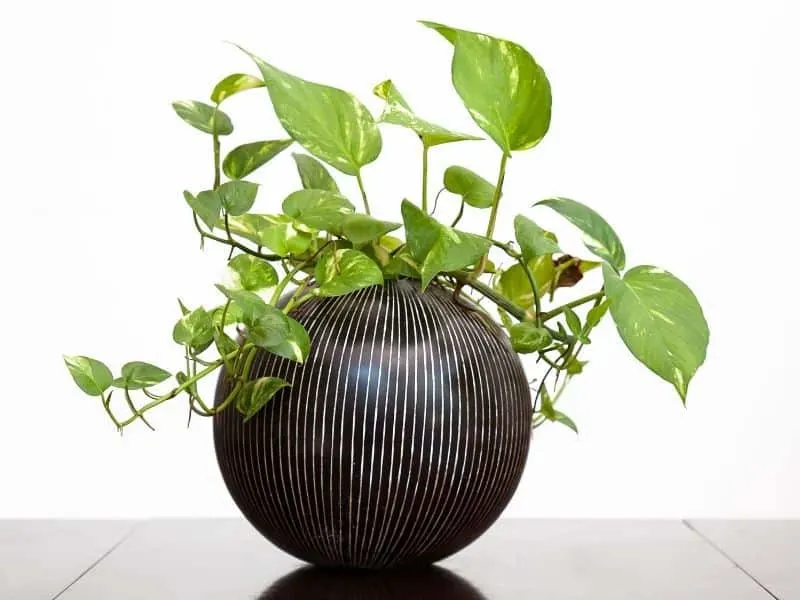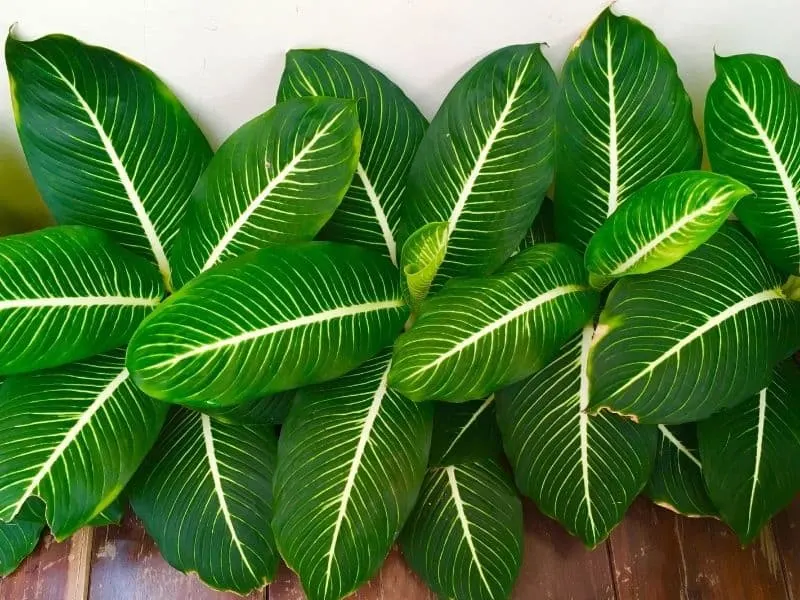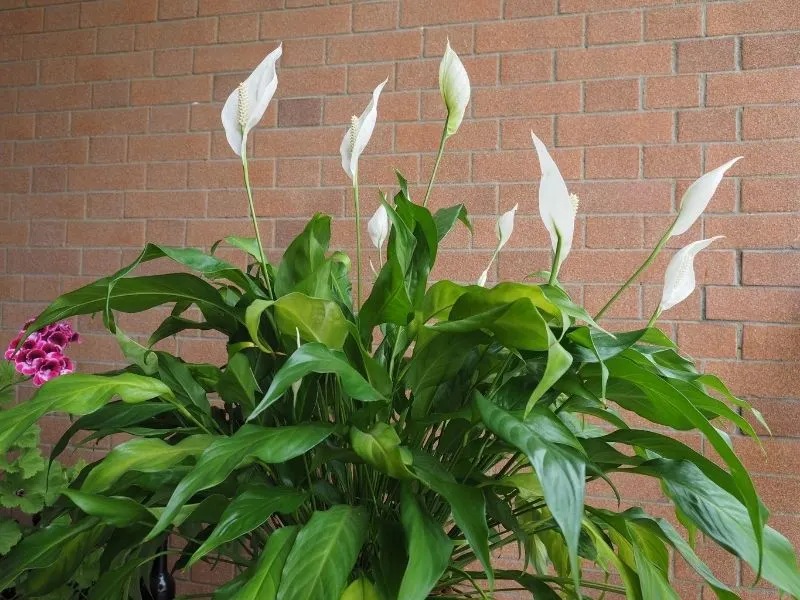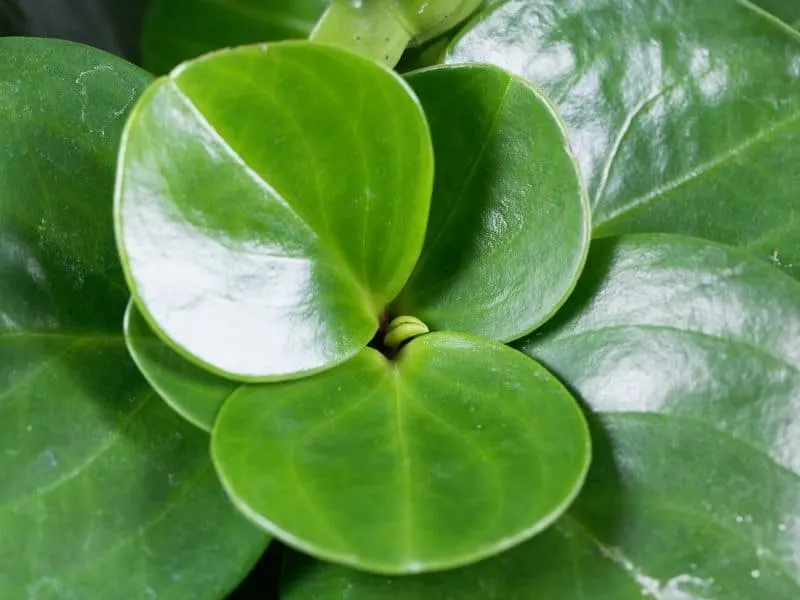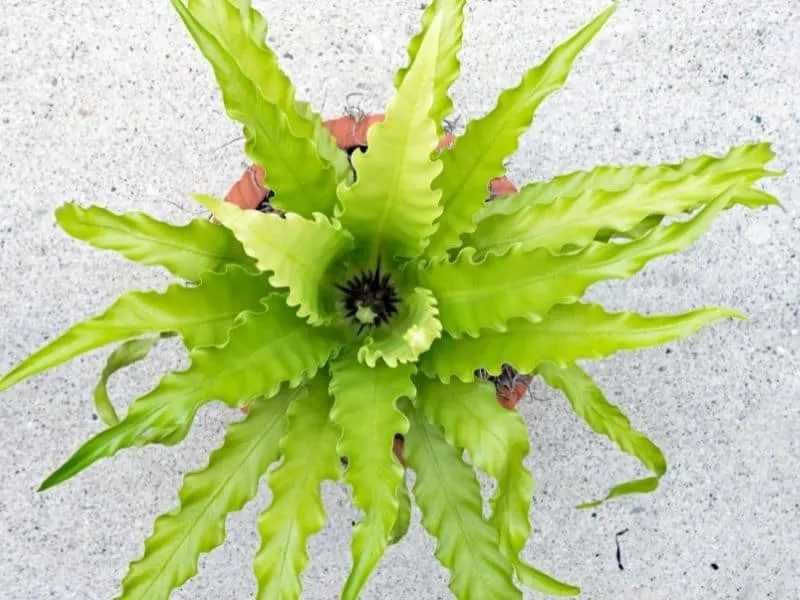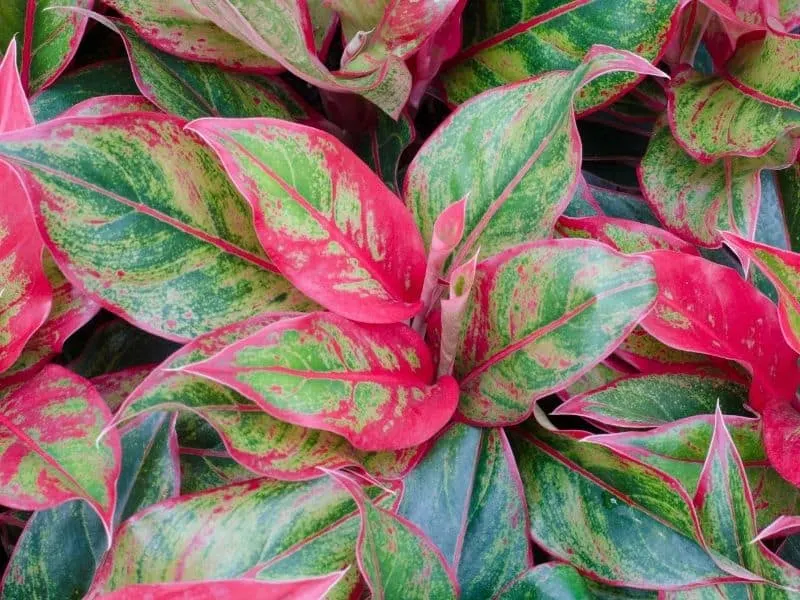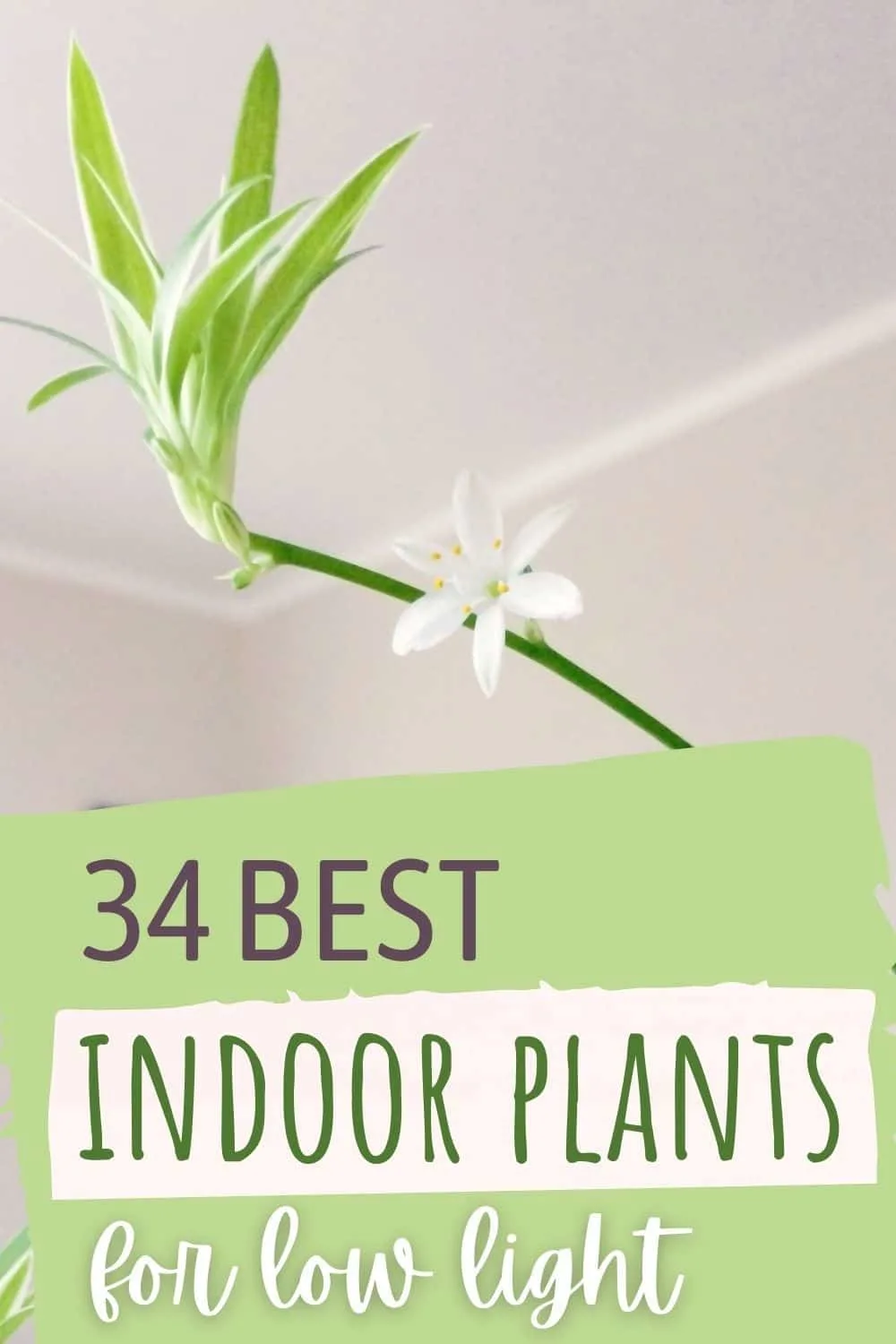If you love indoor plants but you hate the fact that you don’t have a lot of large windows or spaces for light, you’re in luck. You just need to learn more about the best indoor plants for low light and then stock up on as many of those as you can.
Many of us love to open the blinds or curtains and let some sunshine through every day. It’s a great way to wake up in the morning, to get your daily dose of Vitamin D, and to help you boost your mood. That said, there are parts of your home that just won’t have the amount of sunlight needed for certain houseplants to thrive.
In a rush? This is my favorite
from etsy
Unless you plan to build shelving and shove them all into one big window of your home or relocate these houseplants to a greenhouse, your best bet is to fill your home with plants that don’t need as much sunlight. The good news? There are many beautiful low-light plants to choose from.
There are many species of houseplants that will thrive in low light situations. You just need to know what they are and how to care for them properly. Maybe you’ve been under the impression that you can’t have houseplants unless you have a lot of great, bright light for them to enjoy. While this is true for some species, there are many others that do very well in low light.
Here are some of my picks for the best indoor plants for low light.
1. Dragon tree (dracaena)
The dragon tree is a type of dracaena, dracaena marginata, to be precise. This is a really popular houseplant because it’s easy to care for, thrives in less light, is hardy, and looks great. You can find this plant in different sizes and varieties, and the bigger ones look a bit like a tropical tree. Smaller ones look beautiful on a table or shelf and they don’t need a lot of water.
2. Snake plant
Snake plants have a unique, easily recognizable look to them, and they look great in any room or in any collection of other houseplants. Sometimes called Mother in Law’s Tongue, the striped green and white leaves grow straight up tall. They have also been proven to be great for adding oxygen to the room, purifying the air.
Because they can grow tall, they look good on the floor or on a tabletop, or by the bedside. This is a good choice for a dim bedroom. It will look great and also absorb carbon dioxide and release oxygen at night while you sleep. Win-win!
3. Zebra cactus (hawthornia attenuata)
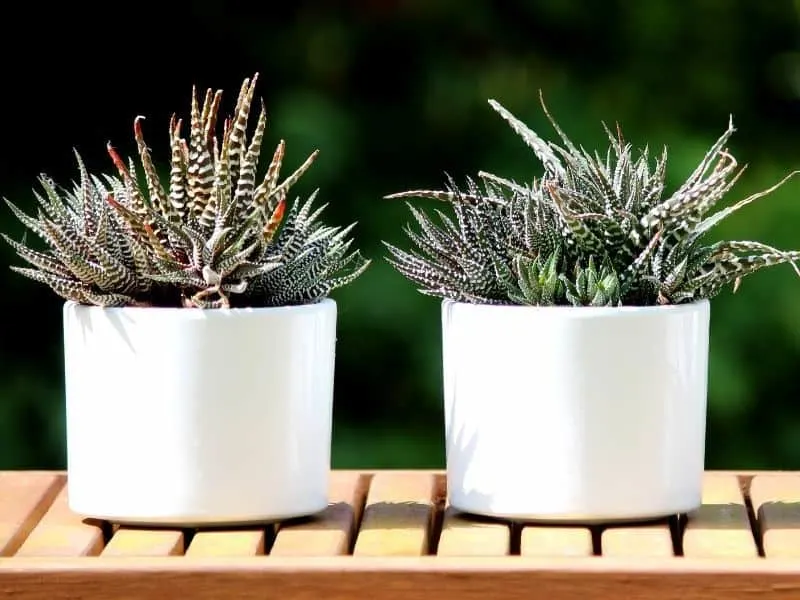
This plant got its common name from the striking black and white stripes on its leaves. This succulent needs very little water and it doesn’t require direct sunlight either. It is sensitive to cold temperatures, so does better indoors or in warm climates. This plant is very easy to take care of and it adds a pop of color and character to your home.
4. Cast iron plant
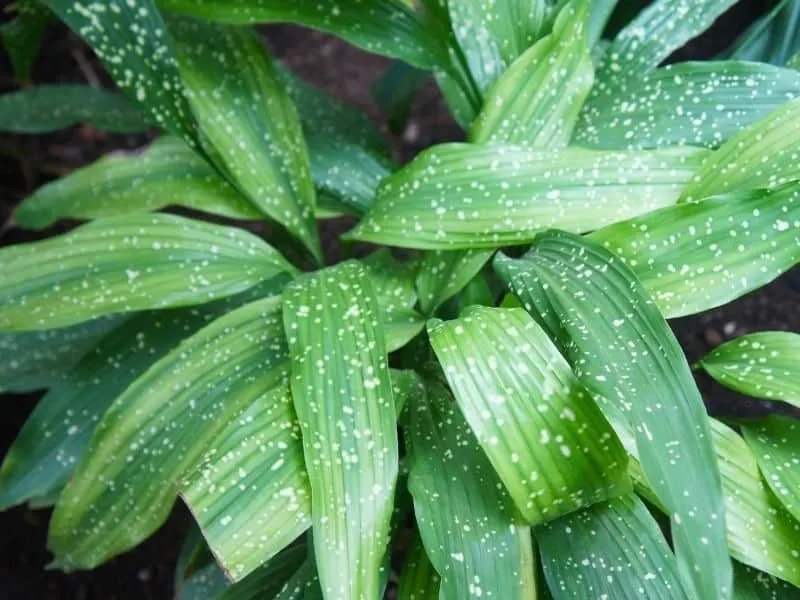
The cast iron plant, or aspidistra elatior, is a hardy green plant that does well in a variety of conditions. This is a great low light plant, as keeping it in direct light can even scorch the leaves. They grow very slowly but require little maintenance. This is a good choice if you tend to forget about your plants.
5. Ponytail palm
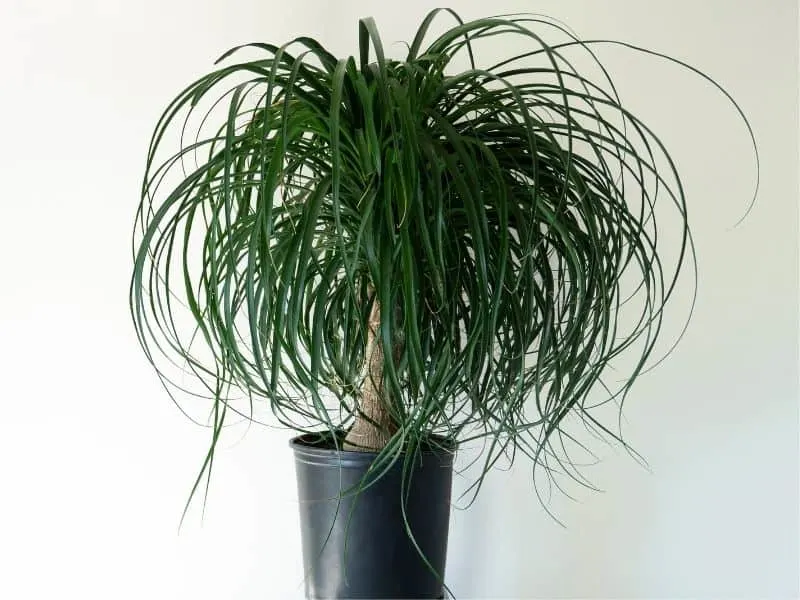
The ponytail palm got its nickname from its ponytail appearance as the strap-like leaves come off the top of the stocky trunk like a fun ponytail. Beaucarnea recurvata is very adaptable and can grow in a variety of lighting conditions, making it a good choice for those low-lit areas of your home.
6. Staghorn fern

The staghorn plant does really well in low light, and it also does great with humidity, which is why many owners decide to place it in the bathroom. A type of fern, it has lush, green leaves and can be placed in a pot or hung from a basket, or on the wall. When hung on a wall, they have a very unique look that can resemble taxidermy. They’ll add fresh oxygen to any space in your home.
7. Nerve plant
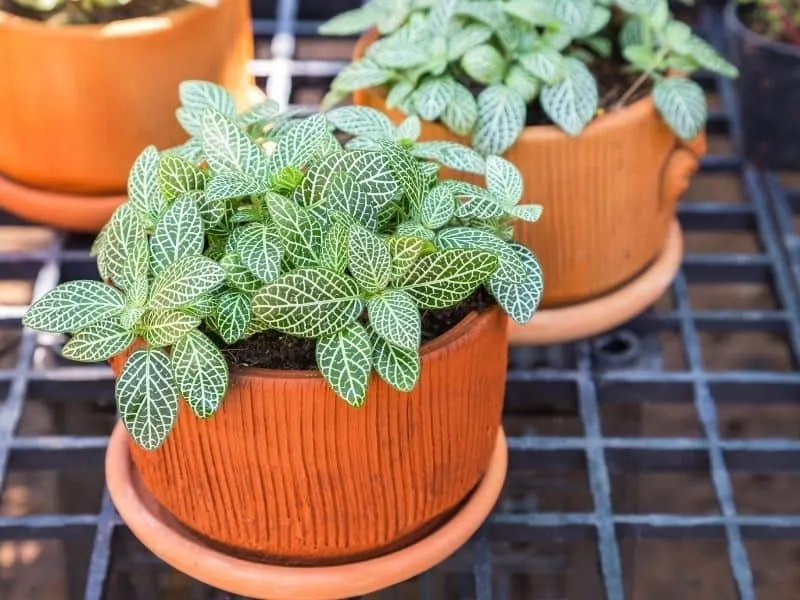
The nerve plant also does really well in low lighting, although it might not be as colorful when it’s not in full sun. This plant is sometimes called “fittonia” and is a small-leaf plant native to Peru. You can find it in a variety of colors from green, white, pink, and light green. This is a small plant that usually only grows about 6 to 12 inches. It will look good on a table or even in a terrarium.
8. Lucky bamboo
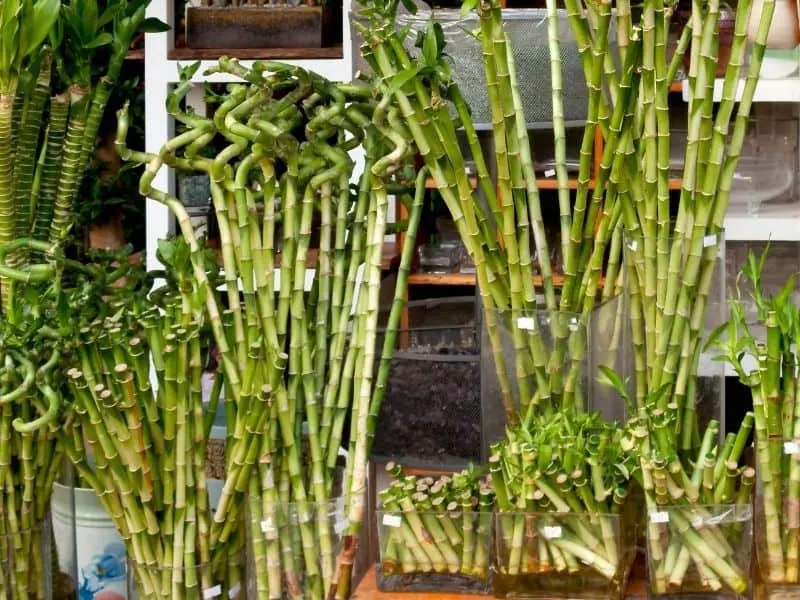
Lucky bamboo, Dracaena sanderiana, is a beautiful, easy-to-care-for plant that can go nearly anywhere in your home. I’ve kept one in a bathroom with no window for years now and it’s growing and thriving. This bamboo is sold in a variety of sizes and shapes, loops, and braids and then formed together in a topknot for the leaves to sprout off the top, giving it an extra flourish. It’s not actually bamboo, but a type of dracaena, but they are very popular and very easy to care for.
9. Monstera
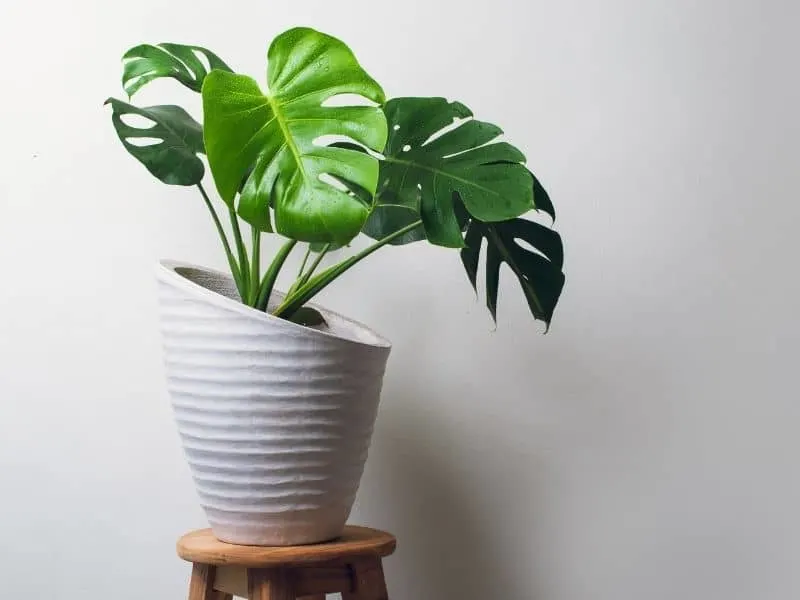
The monstera has a unique look, although it is sometimes mistaken for a split-leaf philodendron since they look similar. The monstera grows big, tall green leaves and can thrive in all lighting conditions, so you can place it just about anywhere in your home and it will do well. It’s also a bold, beautiful plant that will likely have people asking about it every time they see it.
10. Corn plant

Another great low-light option is the corn plant. Dracaena fragrans is called this because it has large, leafy, corn-like foliage. They can grow really tall and look very pretty and dramatic in any space. They do fine in shady corners and also in direct sunlight in front of a window so you get a lot of flexibility with this plant. Keep in mind that corn plants will grow slower in low light and will also have a darker green color. If you want it to grow faster, or bring out the light green variegation, you should move it to a sunny spot.
11. Spider plant
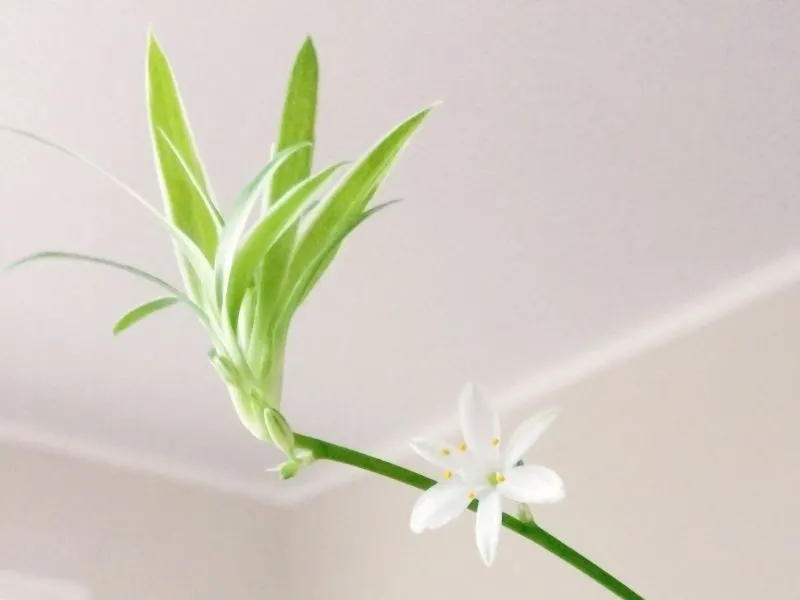
Spider plants are fun, pretty, easy to care for, and look great in pots or hanging baskets. They make a fantastic start plant for someone new to keeping houseplants. They also do really well in low-light areas. They are sometimes called the “airplane plant” because they produce baby plants on their tips and you can use these baby plants to repot and grow more spider plants.
12. ZZ plant (zamioculcas)
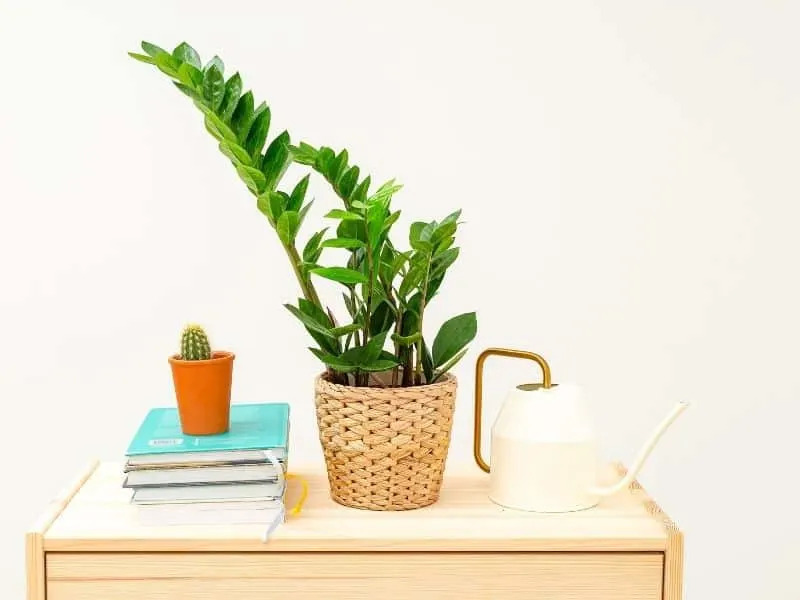
The ZZ plant is very hardy, so it’s great even for those just learning to care for houseplants. It has a bright green color, and the lush foliage looks great anywhere and in any type of pot or container. It’s often been called one of the hardest plants to kill so if you’re new to houseplants, this is a good choice.
While ZZ plant does best in bright, indirect light, it will still thrive in low light conditions as well. This could be a good plant for moving around the home, or for places where sunlight reaches part of the day but not the rest of the day.
13. Silver queen
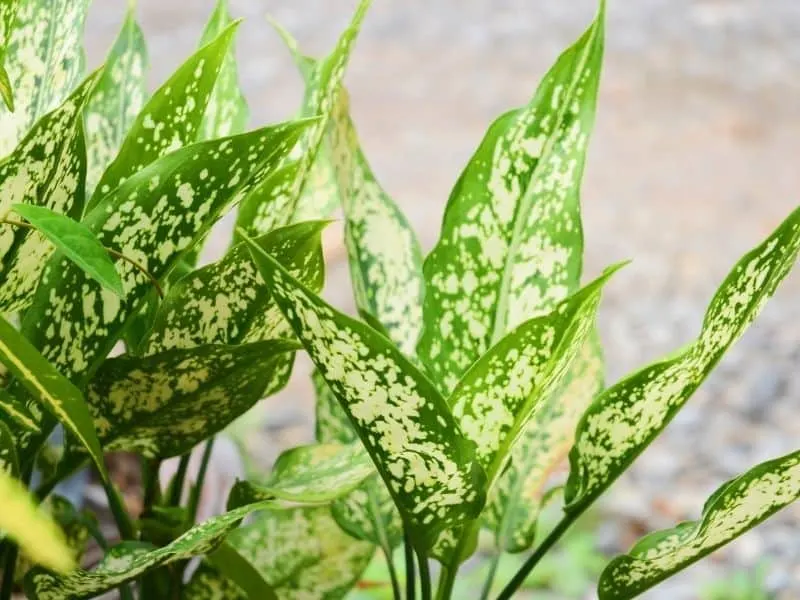
Silver queens are a type of evergreen plant with light green leaves that often appear speckled. This medium-sized plant can grow from 8 inches to as tall as 4 feet high and it’s great for any indoor room since it doesn’t need direct sunlight.
They are sensitive to cold, so be careful placing them too close to a window when it’s cold out, or any other drafty area of the house. Otherwise, silver queens are hardy, which makes them a great choice for new plant collectors, too.
14. Arrowhead plant
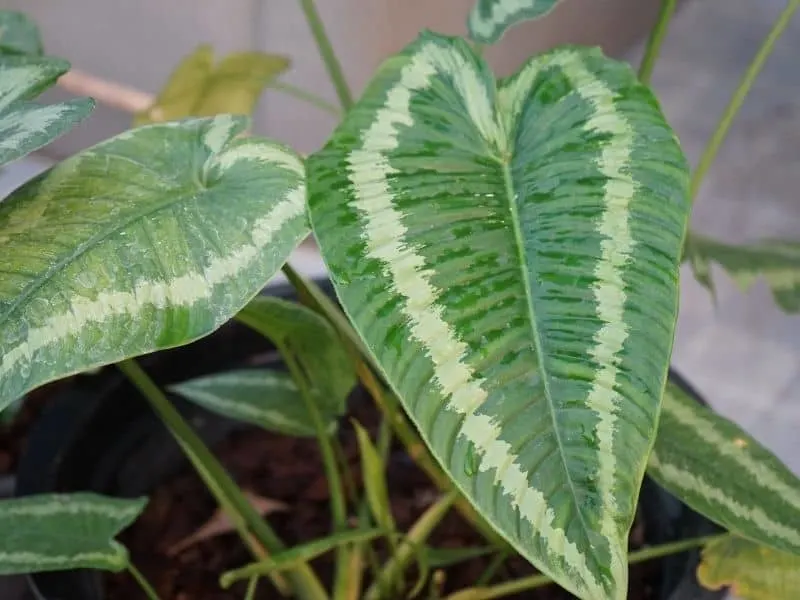
The arrowhead plant has green and white leaves and sometimes bronze colors as well. It grows in a mound when small but can start to vine out as it gets bigger. It gets its name from the arrowhead shapes the leaves make.
It looks beautiful when put in hanging baskets or even positioned to climb up a trellis. Low lighting will usually create greener and less variegated colors in the arrowhead plant.
15. Calathea
This beautiful leafy plant does well in dark corners and low-lit areas of the home. Calathea has dark green leaves with silvery-like edges and a scalloped end to them. It has a unique look when set against other green plants, giving texture and color to your space. It’s fairly easy to care for and grows slow.
16. Creeping fig
Creeping fig is a type of ficus and is native to the tropics. They do well in low light and humid conditions, making them another great bathroom plant choice. It is a vine and will also crawl across the wall or up a trellis. They grow in almost any lighting conditions and they are fast-growing but will grow slower in low lighting.
17. Oyster plant
Oyster plants are sometimes called “boat Lillie” or “Moses-in-the-Cradle”. It’s very easy to grow, thrives in low light, and only needs water about once or twice a week. You just need to keep the soil moist.
18. Maidenhair fern
While the maidenhair fern looks delicate, it’s actually pretty hardy for a fern. It’s sturdy and just needs moist soil but will do well in low light areas. It’s fairly easy to care for and will look great in any room of your home.
19. Pothos
There are many different types of pothos and these hardy plants are very easy to care for. The vining leaves will grow up to ten feet long in most cases and you can either trim them back or allow them to crawl throughout the home or across walls or trellises. Pothos does well in any humidity level and needs watering about weekly.
20. Dumb cane (dieffenbachia)
This is one of the first low light plants I ever got. I picked up two of them from my local hardware store off-season on sale and nearly dying. After I brought them home and nursed them back to life, I saw them really start to thrive in the spring. They can grow very tall, and they do well in low-light situations.
However, dieffenbachia got the common name “dumb cane” because they are poisonous when eaten and are toxic to pets and people. It’s important to keep your furry family members and your children away from this plant.
21. Peace lily
The first thing to know about peace lilies is that they are not actually lilies. The scientific name is Sathiphyullum and the white part that looks like a petal is actually a leaf bract. It grows out around the yellow bud and they can flower a few times a year, when healthy. They do well in medium to low light and have also been known to do well under fluorescent light only, which is why they are commonly seen in offices.
They don’t need a lot of water and they are not easy to kill, making this low maintenance plant a great low light choice as well.
22. Baby rubber plant (peperomia obtusifolia)
(Peperomia obtusifolia) Rubber Baby Plant is a pretty green plant that does well in low light but will grow slower in these conditions. It does better in medium light, so it makes for a good choice in a part of the home that gets sun part of the day but shade the rest of the day. They are cute, easy to care for, and can be potted in a variety of styles, colors, and sizes of containers and will look great.
23. Bird’s nest fern
The bird’s nest fern has a really unique look to its leaves that are a bit like crinkle-cut fries. It will be a quirky addition to any houseplant collection. It also looks great with other ferns, and it will tolerate low-light environments. Be careful not to overwater. Overwatering is the most common cause of death of ferns.
24. Aglaonema
The aglaonema is sometimes called “Chinese evergreen” and is very low maintenance. It can actually go without water for up to three weeks, so if you tend to forget to water your plants, this could be a good choice for you. It will work with an existing succulent garden, too. It doesn’t need any fertilizer and it can thrive under artificial fluorescent light as well.
25. Heart-leaf philodendron
These are similar to pothos but have heat-shaped leaves, hence the name. They can be potted or hung in a basket and allowed to vine. If you have small children or pets, you should hang them high, because they are toxic. They only need to be watered about once a week.
I like to bottom-water mine, so it doesn’t get overwatered. If your leaves are turning yellow, this means you’re watering too much. They do well in dim light conditions. Direct sunlight can be too harsh and burn the leaves.
26. English ivy
English Ivy is considered an invasive species and should not be planted outdoors. However, it can make a nice indoor plant that does well in minimal light. This creeping vine will grow fast, less so in low light than in direct sunlight, and can be worked up a trellis or hung across a wall. It’s also a great air-purifying plant that will filter toxins, mold, and even fecal matter out of your air.
27. Prayer plant
Prayer plants get their name because the leaves look like they are praying. They are famous for moving at night and many people have put cameras on them to catch the “movement” in action. They do well in semidarkness, but not in cold temperatures. Avoid drafts and cold windows. You want to mimic the native jungle habitat as much as possible.
28. Kokedama
Kokedama is sometimes also called the “poor man’s bonsai” and are Japanese moss balls. You can use them for greenery in the home, but they don’t need planters. They can be hung from the ceiling or placed on a table. In too much light, they will dry out, but they do well in medium or very little light.
29. Marimo
Marimo is another type of moss ball and is sometimes called “Marimo balls”. They need to live inside water, like a fishbowl or glass. It doesn’t like a lot of light at all, so it’s perfect for a shady spot in the home. They’re very easy to care for. Just drop them in water and let them be.
30. Red anthurium
Anthurium plants flower beautiful, red, waxy flowers and have waxy-looking leaves. The blooms usually last about six weeks. When they die, don’t toss your plant. Just continue to care for it and the blooms will return. It only needs watering about once or twice a week and does well with minimal lighting.
31. Rex begonia
Rex begonia has unique, colorful leaves and does well in dim lighting. They thrive in humid areas, but only need direct water when the soil feels dry to touch. I accidentally killed my first rex begonias from overwatering, so be cautious of this and bottom water if you are worried about overwatering.
32. Schefflera “soleil”
The Schefflera “Soleil” has light green leaves that are sometimes described as lime in color. They are really pretty and with the right care can grow very large. It’s actually a tree, not a plant, so the potential to get large is there. It will bring a tropic feel to the place. But don’t leave it sitting in standing water (no bottom watering) because the roots will rot.
33. Dancing bones cactus
Cacti make great low-light plants, and they require little maintenance as well. Dancing bones cactus is a type of jungle cactus and they are not spiky like the cacti you might be familiar with. They grow on tree trunks in their natural habitat, and they look a bit like moss.
34. Rattlesnake plant
This plant is often grown specifically for its beautiful foliage and rattlesnake plants also do well in dim lighting. They love humidity so you can mist them with a bit of water from time to time. Water the soil only when it dries out completely. It’s fairly easy to care for and looks great amidst a lot of other green plants because it will stand out as unique.
Conclusion of the best indoor plants for low light
Now that you have this long list of the best indoor plants for low light, you can start to acquire some of your own. Some of these houseplants are so common, you might already own a few of them without even realizing they do well in lower light conditions. Now that you know, plan accordingly and make the most of your plant space.



